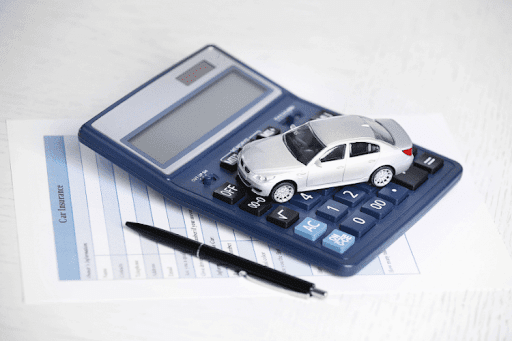How to Use Historical Data to Improve Cost Forecasts
Use historical data to spot patterns, avoid surprise costs, and improve your cost forecasts with smarter, more confident budgeting decisions.

Why do surprise costs keep throwing off your budget? One month, it’s a tech upgrade; to improve the next, a spike in ad spend, constantly undermining your efforts at improving cost forecasts.
The problem isn’t your planning; it’s ignoring your history. Past costs are clues that, when used well, take you from guessing to confidently forecasting costs.
Cash Flow Frog makes it easy to build projections from what’s happened, not just what you hope will happen.
Understanding Historical Data in Cost Forecasting
Think of historical cost data as your business’s memory. It tracks spikes, lulls, and price hikes, helping you prepare for them before they occur again.
It often reveals:
- Recurring expenses that slowly climb
- Seasonal swings (like holiday marketing)
- Forgotten one-off purchases
- Gradual vendor price increases
Instead of guessing, you can say, “Costs rose 9% in Q4 last year. Let’s prep for that.” Companies that utilize this data adapt more quickly and plan with greater confidence, mainly when uncertainty arises.
Collecting and Organizing Historical Data
If your expense records are scattered across inboxes, spreadsheets, and Slack, it’s time to pull them together without spending forever on it.
Start by:
- Grouping major areas (operations, payroll, marketing) and breaking them into line items
- Collecting 12–24 months of data to reveal reliable patterns
- Cleaning your data: remove duplicates, proofread, and standardize formats
You don’t need fancy tools, just one that helps you spot what matters. Even a data scraping tool can simplify the process by pulling cost information from different sources into one place. Review monthly to build resilience and catch surprises early.
Analyzing Historical Data for Patterns
Once your data is organized, the real value comes from analyzing historical cost data, not just reading rows, but uncovering what they’re telling you.
Ask:
- Do costs spike at the same time each year?
- Are vendors quietly raising rates?
- Do spending patterns align with holidays or product cycles?
To spot trends:
- Use rolling averages to smooth out noise
- Compare year-over-year to find shifts
- Flag outliers (like a random $2,000 shipping charge) to identify patterns or errors
One business found that spring ad costs consistently surged, not due to inflation, but because of their product launch cycle. Now, they budget early and space out spending.
Applying Historical Data to Cost Forecasting
This is where it all comes together, using past data to make smarter decisions and refine cost forecasts. If a vendor raised prices by 5% last year, plan for 6% this year. If December always brings a spike, stop being surprised by the budget for it. Even “one-time” expenses, like HVAC repairs, might be more regular than they seem.
One SaaS company noticed ad spending jumped 20% every November. At first, they blamed seasonality. However, after reviewing three years of data, they adjusted their prep campaigns earlier and spread out promotions. Now, what used to derail Q4 feels predictable. And if Excel slows you down, Cash Flow Frog can turn raw history into live, reliable forecasts.
Common Challenges and How to Overcome Them
Even with sound systems, things can still get messy. Here are common pitfalls and how to avoid them without burning out:
- Fragmented records: If your data is everywhere, don’t backtrack; just start clean from this month forward.
- Tool overload: Too many platforms create confusion; use one or two that work well together.
- Time scarcity: A focused 30 minutes each month is enough to stay ahead.
- Bias blindness: Trust the data over assumptions; it often reveals what your gut misses.
The most resilient businesses don’t guess—they spot patterns early and adjust fast. They don’t wait for the shift; they move with it.
Benefits of Using Historical Data for Cost Forecasting
Let’s be honest: no one reviews old invoices for the fun of it. You do it because it sharpens visibility and transforms how you run your business.
Here’s what historical cost data delivers:
- More accurate forecasts: You're planning with real patterns, not guesses.
- Smarter cash flow timing: Shift resources, delay spending, or scale up right when it matters.
- Stronger decisions: It's not just about what you spend, but why.
- Credibility for growth: Clean, data-backed forecasts cause trust, especially when improving cost forecasts to pitch investors
And the best part? Tools like Cash Flow Frog sync with your accounting system to turn raw data into smart, living forecasts without the spreadsheet slog.
In Conclusion
Retrospective is not regretting, but it is strategizing. When you analyze historical costs, you gain a definitive playbook: what happened, what failed, and what is becoming a quiet yet notable trend.
The more you read it, the sooner you go out there with purpose, not defense. Now is the right time to take charge and stop guessing and predicting with confidence.
We would also like to know what you are doing with your data. What patterns changed your planning? What surprised you most? Share your story; it might help someone else.
Your data already holds the answers. Analyzing historical cost data ensures that forecasting becomes proactive, rather than reactive.


